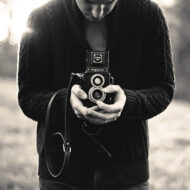How to Start Drawing
When one considers how to start drawing, it can seem completely overwhelming and intimidating. It’s strange when you consider that as very young children, we all drew without hesitation or fear. Much like walking or learning to speak, there was no fear about making mistakes or falling down. It wasn’t until we became aware of peer pressure or the opinions of others that most of us stopped drawing.

Most kids stop drawing not long after this, stopping all drawing skills in their tracks. (Photo Credit: Myra Naito Art Credit: Myra Naito, 1st grade)
This arrested development in terms of drawing, is exactly why when you attempt to draw as an adult, it looks like a child drew it. You’re basically picking up where you left off as a child.
So, cut yourself some slack!
Think of all the experts and pros in any field. They didn’t get there right from the start, did they? Think of Kobe Bryant. Was he as good as he was with the Lakers from the moment he picked up a basketball as a child? Did Carlos Santana play the way he does now from the second he picked up his first guitar? Did Bill Gates and Steve Jobs create tech that people would clamor over on their very first try? Even Thomas Edison didn’t create a working light bulb on the very first try!
So, why would you expect to draw like DaVinci from the get-go?
The question of how to start drawing isn’t steeped in rocket science or brain surgery. It really is simply a matter of…just starting! For most people, the very act of putting a drawing implement to paper seems like a completely foreign act. Or so they think. In reality, it’s something we have all done continuously since learning how to write our names. Drawing as a child may have stopped altogether, but writing has not. Writing is a form of drawing. It’s drawing a series of symbols (which is what the alphabet is in any language) in sequences that make sense.
Granted, some of us chicken scratch our way through that too, and I will be the first to say that my signature rivals a doctor’s handwriting even on my best day.
That being said, getting started means to just do it and do it without expectations. If you eliminate expectations, you give yourself the luxury to make mistakes. Mistakes are the key ingredients to learning, so why would you not want to make as many as possible?
One of my favorite getting started exercises is called the blind contour drawing. Pick an object to draw. With pencil or pen in hand and something to draw on (larger paper is better), start anywhere on the object with your eyes. Put your pen to your paper and as you slowly move your eyes around the object, follow with your pen on the paper at the same speed as your eyes are moving. Do this…WITHOUT LOOKING AT WHAT YOU’RE DRAWING.
Yep. You got that right. WITHOUT LOOKING. It’s not called blind contour for nothing!

Blind contour drawings are a perfect way to start drawing without any pressure or expectations. (Photo Credit: Myra Naito Art Work: Myra Naito)
Keep your pen moving as your eyes continue all the way around the object. This exercise is one of the best how to start drawing exercises because it literally removes all expectations for the simple fact that you’re doing it blind. How can you expect a masterpiece if you’re not even looking at your paper? How can you beat yourself up emotionally? You really can’t!
That’s not to say that there’s no room for improvement with this exercise. As you learn how to really see the object in front of you, and as your hand-eye coordination improves, so do your blind drawings. Learning how to really see is key to learning how to draw, so this really is one of the best ways to start so long as you don’t cheat.
Afterwards, you can start doing regular contour drawings while actually being able to look at your drawing. Having learned how to really see the object with blind contour drawings as well as literally getting the feel of moving your hand in sync with your eyes, whatever you do while actually looking at your drawing should come much easier to you and your drawings will begin looking a little more polished.
Where you go from there is really up to you.
There are a gazillion how-to Youtube videos to keep you going. The bonus is they’re free. You might even find some free lessons on platforms such as Skillshare, including my own freebie, How to Draw: The Very Basics.
If you do a deeper search, you’ll find lessons online that you require a modest fee (as opposed to the thousands you would pay in art school). Three of my current favorites are:
The key in successfully navigating learning how to draw, is to keep your expectations out of it. Learn to enjoy the learning that can only come from making mistakes. Get to the point where you can look forward to them because you understand that they are an opportunity for growth.
And lastly, don’t compare yourself to anyone else. Admiring is okay. Comparing is not. The only person you should compare yourself to is the artist you were yesterday. That person is your greatest competition and your biggest fan all rolled into one.
This blog contains Amazon Affiliate links. As an Amazon Associate, I may earn from qualifying purchases.

Recent Comments